Sound Like Metallica Without Busting the Bank!
In this episode of Sound Like, we attempt to recreate the sound of heavy metal titans Metallica for under £1500.
Without doubt the most successful metal band of all time, Metallica have transcended the heavy metal community to become one of the most influential and renowned artists of the last 40 years. A founding father of the thrash metal genre alongside their contemporaries Megadeth, Slayer and Anthrax that together comprise the “Big Four”, Metallica brought metal out of the glam era into the mainstream in the late 1980s and early ’90s.
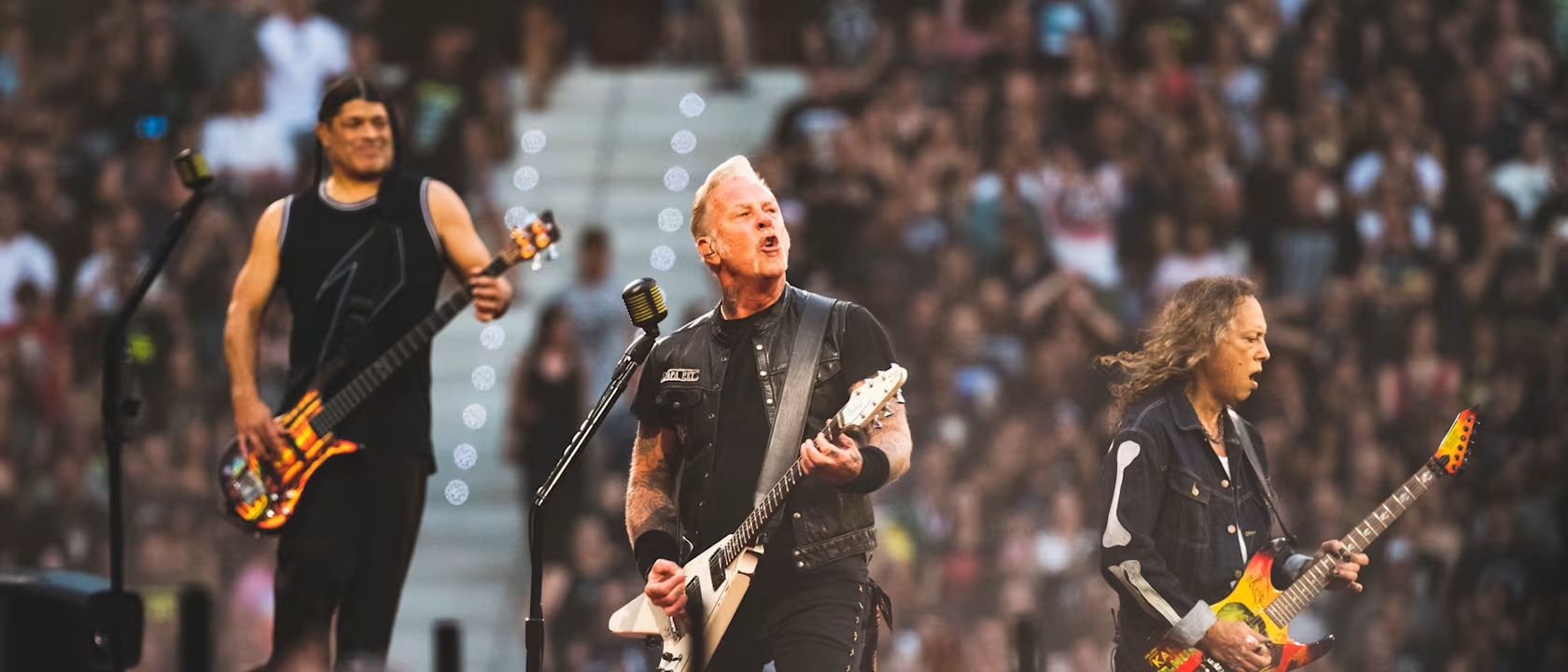
History of the Metallica “Sound”
1981-1991
Metallica grew a loyal fan base with their raw and furiously thrashy early releases Kill ‘Em All (1981) and Ride the Lightning (1984). The guitars on these records are loud, brash and have a lot of bite. They entered into more progressive territory in the second half of the ’80s with their widely accepted pièce de résistance that is Master of Puppets (1986) and particularly …And Justice for All (1988), the latter of which boasted super-complex arrangements, highly-technical instrumentation and more brooding and menacing guitar tones.
With every album maturing as the band became more experimental with their songwriting, their critically-acclaimed self-titled record, otherwise known as the Black Album (1991), is where the band peaked commercially. Featuring a number of their signature songs, including Enter Sandman, Nothing Else Matters and Sad But True, producer Bob Rock’s influence proved vital to the album’s overall success, with simpler song structures, catchy anthemic choruses and guitar layered on guitar in a wall of sound.
1996-2003
After three years of rigorous touring in support of their self-titled album, Metallica took what proved to be their most diverse turn in musical direction with Load (1996) and ReLoad (1997). Going for a more alternative hard rock sound, this divisive double release received backlash from some older fans, feeling that the band had “sold out” to remain relevant to a generic audience. Today, this unconventional pair of rock albums are thought of a little higher than they were on release, mixing some country sounds with a more old school crunchy guitar vibe.
After the cover album Garage Inc. (1998) and the orchestra-backed live record S&M (1999), the aggressive-sounding St. Anger (2003) was the long-awaited follow-up to ReLoad. Also released to poor reviews, Metallica’s fans struggled to accept the band’s new and edgier drop-tuned style – as well as the notable lack of guitar solos.
2008-Present
Choosing to tour extensively after the lows of St. Anger in order to resolve the turmoil within the group, Death Magnetic (2008) and Hardwired… to Self-Destruct (2016) were considered a return to form for Metallica. Resurrecting their older, thrashier aggression, these releases showcased Metallica’s huge listener pulling power after all of these years. 72 Seasons continued in the same vein, ditching the ballads and experimental aspects of their nineties records for a tried and tested metal formula that harkens back to Kill ‘Em All, from the Marshall guitar bite to the feisty riffage.
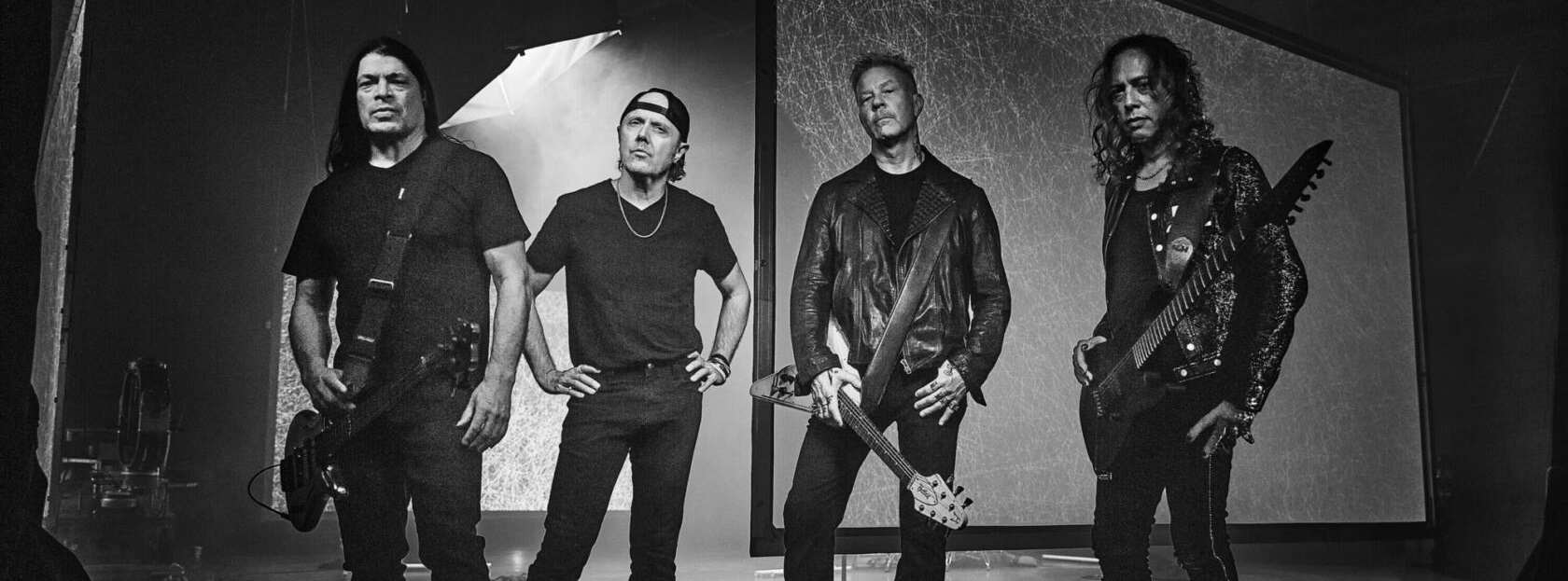
Metallica’s Guitars
Papa Het’s rhythm-chugging Explorer is his most iconic guitar, debuting a white Gibson during the Ride the Lightning tour. ESP later produced copies of this distinctive design (the EXP/MX series), which Hetfield popularised with frequent use in music videos and live performances from the …And Justice for All era onwards.
James is also known to use LP-shaped guitars too, with his signature ESP Iron Cross taking on the aesthetic of the Japanese company’s Eclipse single cut model – with a racing stripe on the body and a metal cross plate embellishment next to the tailpiece.
ESP James Hetfield Signature Guitars
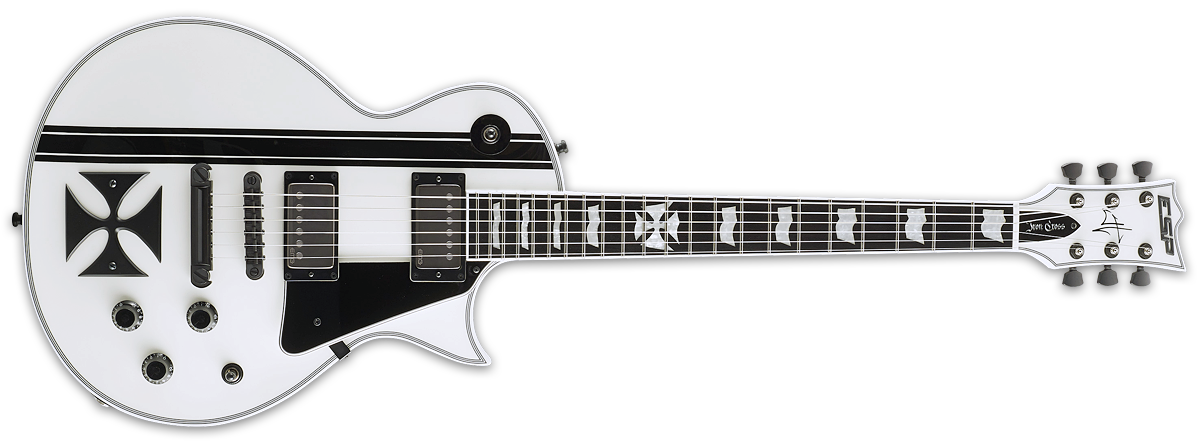
Today, however, Hetfield’s flagship signature guitars are the Snakebyte and the v-shaped Vulture. Taking on the vibe of his older EXP/MX models, the Snakebyte throws in a modern twist with a sculpted lower bout and sharpened corners on the lower horn of the body and the headstock. The Vulture shares a similar design philosophy as the pointed edges of the ‘v’ are slanted at a flatter angle.
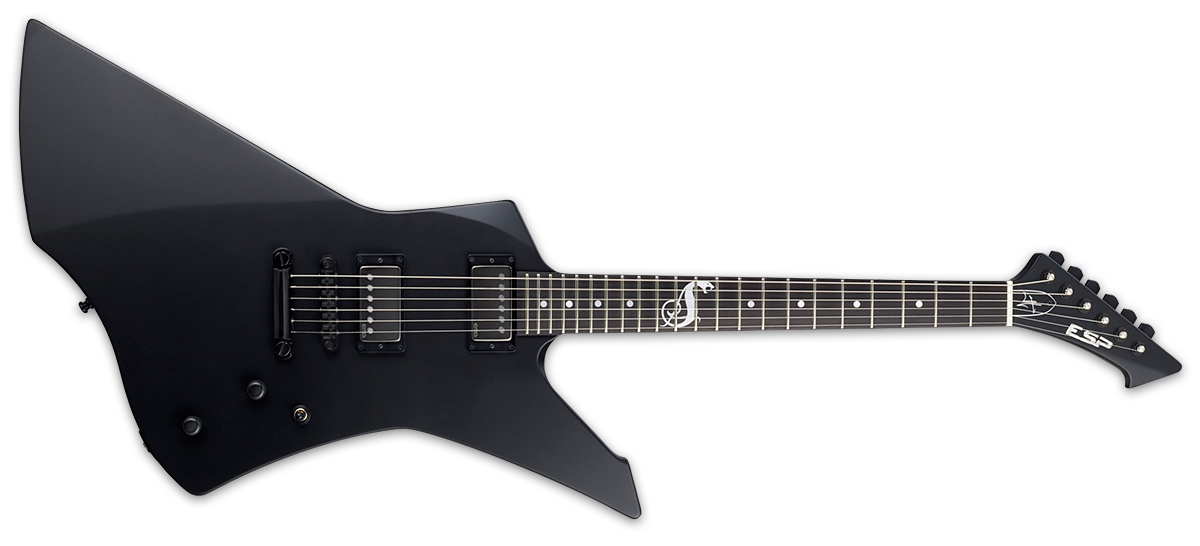
EMG James Hetfield Signature Pickups
The EMG 81/60 pickup combination has been a mainstay for Hetfield throughout most of his career. Favouring the crisp attack of the active design, Metallica’s James Hetfield and Kirk Hammett were among the first artists to be endorsed by EMG, relying upon their pickup creations since Master of Puppets. Recently EMG collaborated with Hetfield to design the ceramic-poled ‘Het Set’. Deriving closely from his classic 81/60 humbucker pairing, these pickups benefit from a more potent midrange and a wider dynamic range – allowing for greater articulation and clarity.
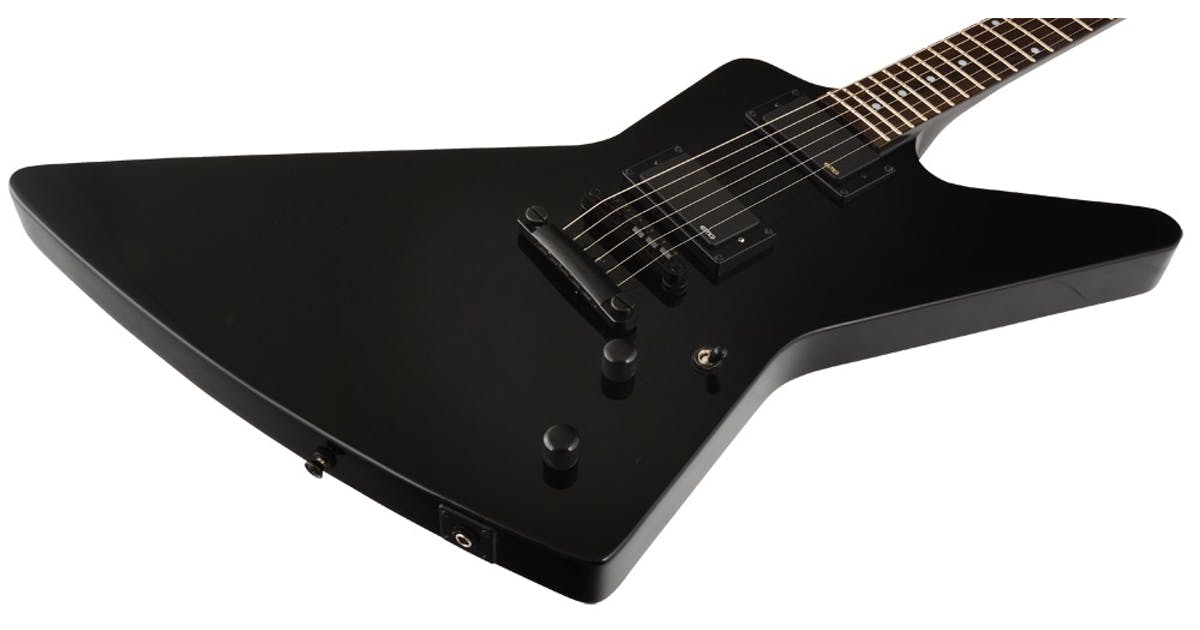
The ESP LTD EX-200 or Epiphone Extura Prophecy are great choices for the Hetfield sound and visuals at a more friendly price point. They both resemble James’ ESP Explorers from the self-titled album era with a clean white or stealthy all-black aesthetic. The key ingredient of these guitars are the pickups – the ESP’s being passive, but with high-output ceramic pole pieces, and the Epiphone’s being active Fishman Fluence packing a huge punch. Stretching your budget further will get you an ESP LTD variation of Hetfield’s signature guitars.
ESP Kirk Hammett Signature Guitars
Much like James Hetfield, Kirk Hammett has relied on his ESP workhorses for decades while in Metallica. Opting for aggressive lead playing “s-style” M-II guitars around the time of the Black Album, this model later inspired Kirk’s KH-2 signature guitar. Featuring a Floyd Rose double-locking tremolo system, EMG 81/85 pickups, and the idiosyncratic skull and cross-bone inlays – the KH-2 has remained Hammett’s flagship signature instrument since the early ’90s.
The ‘Caution Hot’ version is his most identifiable iteration, however Kirk is also known for featuring classic horror movie poster graphics on his KH-2 guitars. The most notable of these is the ‘Boris Karloff Mummy’ KH-2, an ESP Custom Shop one-off, however the ‘White Zombie’ is a mass-produced and affordable LTD variant.

Hammett also previously had a KH-3 signature instrument, a model that he used extensively in the Load and Reload tours. Following a singlecut design much like Hetfield’s Truckster guitars, the KH-3 featured a flat top and included a gothic-style spider web graphic on the body. The JH-1 was another early signature model, however these weren’t produced in large numbers and are considered rare and collectible today. Following a traditional Flying V design, this instrument featured a single EMG 81 bridge pickup and a Floyd Rose tremolo system.
EMG Kirk Hammett Signature Pickups
Jackson Dinky Guitars
Hammett previously had a KH-3 signature instrument, a model that he used extensively in the Load and Reload tours. Following a single cut design much like Hetfield’s Truckster guitars, the KH-3 featured a gothic-style spider web graphic on the flat body. Hammett is also a huge Les Paul fan and proudly owns the famous Gibson “Greeny”, a Cherry Sunburst LP owned by Fleetwood Mac founding member Peter Green and rock and roll legend Gary Moore of Thin Lizzy fame. The Epiphone Greeny model captures the spirit of this unique instrument, now faded to what is considered a Lemon Burst. It features an out-of-phase middle switch position, which emulates a mod to the neck pickup to reverse the magnetic polarity.
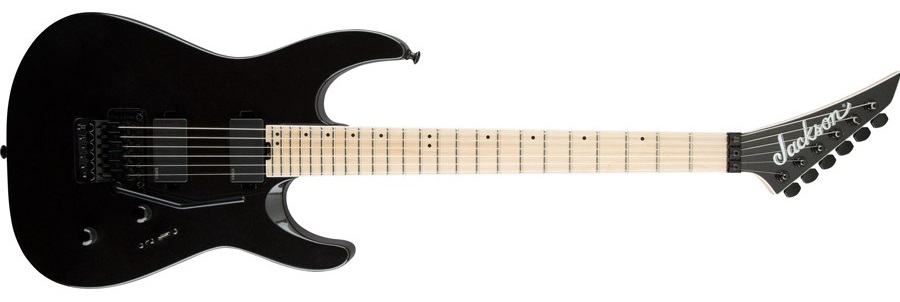
If you want the iconic Hammett look and something practically identical to Kirk’s personal guitar, check out the LTD KH-602, which is his far eastern-made signature model. It’s got the original KH-2 vibe with a neck-through construction and a pair of his signature EMG Bone Breaker pickups. The LTD KH-202 is an even cheaper alternative, although it features ESP-designed pickups rather than EMGs.
Metallica’s Amps
Despite adjusting their sound a number of times over the years, Mesa/Boogie amplifiers have been a Metallica mainstay. Using the legendary Mark IIC+ heads for the recording sessions of Master of Puppets and …And Justice for All, these amps could achieve a tight and saturated distortion – ultimately pioneering the signature Metallica sound. Hetfield and Hammett later used Rectifiers in the ’90s for an even bigger and more modern timbre, and the duo has since experimented with alternative setups since.
James Hetfield’s Amps
Hetfield currently relies on Mesa Boogie TriAxis preamps, paired with Simul-Class 2:90 power amps. Apart from their Boogies, Hetfield has also been known to use Diezel VH4 amplifiers. These became his main source of tone during the recording of St. Anger. He used a modded Marshall 1959 Super Lead on 72 Seasons, which serves up a famous Plexi British grunt. For live performances, Hetfield and his crew have converted to a Fractal Axe-Fx III, joining the every-growing list of artists bowing to the power and utility of a digital setup.
The Roland JC-120 Jazz Chorus is another noteworthy element of the Metallica sound, which James uses exclusively as his clean tone amp. With a solid-state design, this legendary amplifier has a pristine, high-headroom jangle with a super-sweet chorus circuit built in, based on Boss’ legendary CE-1 pedal. If you love the angelic clean tone at the beginning of Welcome Home (Sanitarium), the Jazz Chorus is the answer to that glorious sound.
Considering the wide range of tones in the Hetfield arsenal stacking up over 40+ years, and his preference for premium amps that exceed a modest budget, I think your best choice would be the Boss Katana. This is arguably the ultimate modern amp as it does everything to an incredibly high standard in a bulletproof solid-state package. The high-gain tones are exceptional for the price and sound super heavy in a live setting. It even includes some effects as you might find with the Jazz Chorus.
Kirk Hammett
Despite using Mesa Boogie amplifiers previously for many years, Hammett currently has a signature line of amplifiers with Randall. Their flagship model is the K103, a sophisticated 120W three-channel head that has voicing mode switches and EQ sections for each channel, as well as two tube-driven effects loops and MIDI capability.
A Boss Katana could also get close to Hammett’s tone, but to dial in a more specified lead guitar oriented tone, Marshall would make an excellent choice. He used the famous British amps in Metallica’s early days on Kill ‘Em All and returned to a ’70s JMP head for the making of 72 Seasons. The Origin series are all-valve amp heads that won’t busy the bank. They pack a ton of volume for the wattage, which means they work great with pedals because of the high headroom. The controls are very simple but refined. The “presence” setting is a nice addition for getting a more aggressive, front-footed punch. The highlight here is the two preamp voicings which let you dial in your Metallica sweet spot.
What Guitar Pedals Do Metallica Use?
Metallica aren’t distinguished for using pedals to achieve their core tones – James Hetfield once stated that he prefers the direct distorted tone from an amplifier, as opposed to relying on pedals. Having said that, they have used them to embellish records here and there. Back in Metallica’s heyday, distortion pedals were nowhere near as advanced as they are today – with only a handful of options available.
If you’re looking to build up a more complete Metallica sound, then pedals are the way to go rather than buying the several amps and guitars needed to achieve it. Here are a handful of pedals that contribute to Metallica’s iconic guitar tones.
Overdrive Pedals
Many guitar pedal makers produce advanced, adaptable stompboxes that can closely imitate the tones of distorted valve amp. The MXR 5150 Overdrive has received some unwarranted heat over the years, but this is an excellent high-gain pedal that will get you in the Metallica ballpark, packed with the essential features you’d typically find on a genuine amp channel.
The MXR is based on the EVH 5150 amplifier, an iconic head that has been used by a countless amount of metal bands over the years. Adored for its scooped and dynamic high-gain tone, the 5150 Overdrive encompasses that distinctive sound. With a built-in boost circuit too, you can really tighten up the overall sound of the pedal, akin to when you place a Tubescreamer-style stompbox in front of a distorted amp. The 5150 Overdrive’s noise gate is another thoughtful addition, eliminating the frustrating hiss that can occur when running an ultra-hot amplifier.
On 72 Seasons, Metallica opted to use a boutique Wizard amp with a Klon Centaur in front of it to beef up the gain. These expensive pedals have an air of mystique about them, but its now available to every guitarist as lots of pedal manufacturers have come close in recreating its rich tone. The Wampler Tumnus and Tone City Bad Horse would be great if you’ve got gain stacking in mind – or in other words, layering multiple sources of gain, either with amps or pedals.
Klon Style Pedals
Browse Klon Style Overdrive Pedals
Chorus Pedals
As previously mentioned, the Roland JC-120 Jazz Chorus solid-state amp is the main source for Metallica’s clean tones, both live and in the studio. To emulate its beautiful, washy chorus effect, a dedicated chorus pedal would serve you well. The MXR Analog Chorus pedal is popular for a reason, as it packs a quality and extremely versatile tone. It utilises an old-school bucket-brigade circuit much like the original Boss CE-1 units. This gives you a bold yet warm chorus sound, and features all of the key controls you’d expect to find, as well as two EQ controls that allow you to boost/cut the lows and highs.
The Tone City Angel Wing is a more streamlined, budget option but by no means a cheap-sounding pedal. Although it doesn’t have the same level of flexibility as its MXR counterpart, the Angel Wing delivers that unmistakable analogue tone around half the price.
Jim Dunlop Cry Baby Wah Pedals
Kirk Hammett, love it or hate it, is a wah addict. Once quipping that he’d need to have his foot cut off to stop him from using his wah pedal, Kirk employs this effect in many of his pentatonic-based guitar solos. With his Jimi Hendrix influence evident, Hammett uses wah in a heavier context to not only achieve a screaming lead tone, but to also allow his playing to cut through in very busy Metallica mixes.
Hammett has his own Jim Dunlop KH95 Signature Wah pedal, however it is more expensive than most standard wahs. The CBM95 Cry Baby Mini is a highly-compact alternative of Dunlop’s flagship GCB95 wah model. Giving you a wide sweep despite its tiny footprint, this pedal has an internal voicing switch that adjusts its spectrum, letting you attain crazy highs much like Hammett’s very own custom wah.
Jim Dunlop Cry Baby Wah Pedals
Browse Jim Dunlop Cry Baby Wah Pedals
If you’re interested in finding out how to achieve the tones of your favourite artists, check out more of our Sound Like articles.












Responses & Questions